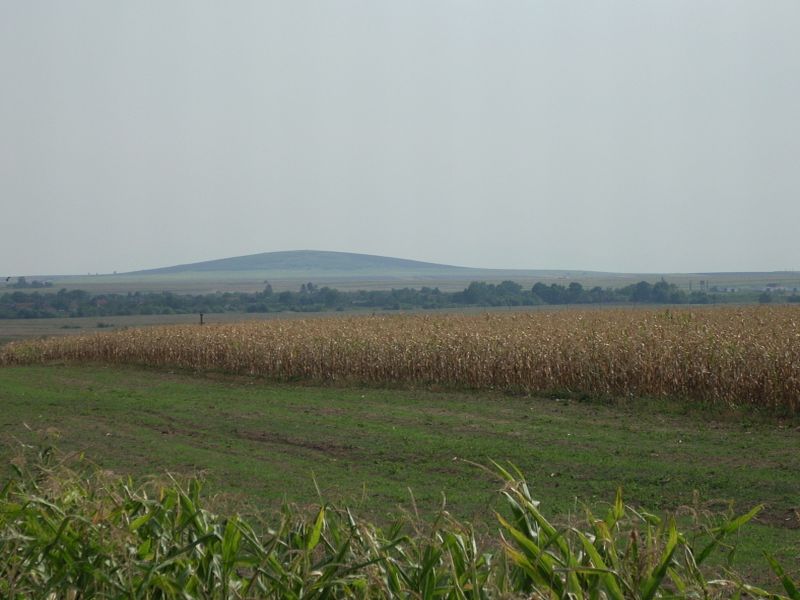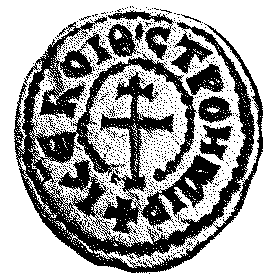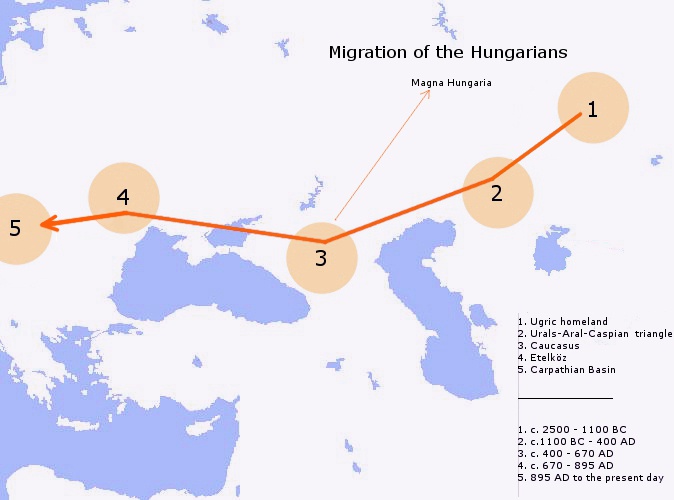|
Sângeorge
Birda ( Hungarian and German: ''Birda'') is a commune in Timiș County, Romania. It is composed of four villages: Berecuța, Birda (commune seat), Mânăstire and Sângeorge. Geography Birda is located in the southeastern part of Timiș County, bordering the town of Gătaia and the communes of Tormac, Voiteg, Opatița and Denta. Climate The climate is temperate continental, having an intermediate character between the continental, Mediterranean and oceanic climates. Winters are relatively mild, summers are long and hot, springs and autumns are short. The average annual temperature is , and the average annual rainfall is , ensuring very good conditions for plant cultivation and animal husbandry. History The first recorded mention of Birda dates from 1690, from Marsigli's notes. It is probably much older and inhabited during the Turkish occupation. By 1717 Birda is recorded in the Habsburg imperial documents with 80 houses; Berecuța with 28 houses; and Sângeorge with 30 ... [...More Info...] [...Related Items...] OR: [Wikipedia] [Google] [Baidu] |
Gătaia
Gătaia (; , archaically ''Gotthal''; ) is a list of cities and towns in Romania, town in Timiș County, Romania. It administers five villages: Butin, Percosova, Sculia, Șemlacu Mare, and Șemlacu Mic. Declared a town in 2004, it also administered four other villages until that time, when they were split off to form Birda commune. Name Geography Gătaia lies on both banks of the Bârzava (Timiș), Bârzava River. Some of the villages (Șemlacu Mare, Șemlacu Mic, Butin, and Percosova) are located south of Gătaia around the Șumigu Hill, an extinct volcano in the Great Hungarian Plain#Plain in Romania, Tisza Plain, along the Moravița (Bârzava), Moravița, Crivaia, and Clopodia streams, tributaries to the left of Bârzava, and Sculia is also located on the Bârzava River but west of Gătaia, occupying the northernmost position in this administrative unit. Gătaia connects to Timișoara and Reșița both by rail and by Roads in Romania, national road . History The first r ... [...More Info...] [...Related Items...] OR: [Wikipedia] [Google] [Baidu] |
Sveti Đurađ Monastery
Sveti Đurađ or St. George Monastery ( sr-cyr, Манастир Свети Ђурађ; ) is a medieval Serbian Orthodox monastery located in Mânăstire, Timiș County, Romania, 20 km from the Romanian-Serbian border. It was established in 1485 by Serbian despot Jovan Branković; the present buildings date to 1794, built by Iguman Augustin Petrović as a school and monastic church. Services are held in Serbian and Old Church Slavonic. The last resident of the monastery, Sister Evgenija, died in 2020. Among the relics that the monastic church houses is a fragment of the skull of Saint George, brought here in the 15th century by Đorđe Branković, and a piece of the chain with which Saint Peter was bound. The monastery is listed as a historic monument by Romania's Ministry of Culture. The monastic church and the monks' cells are given as separate entries. History Legend has it that the monastery was founded during the Iconoclastic movement, under Empress Irene and her son Co ... [...More Info...] [...Related Items...] OR: [Wikipedia] [Google] [Baidu] |
Luigi Ferdinando Marsili
Count (nobility), Count Luigi Ferdinando Marsili (or Marsigli, ; 10 July 1658 – 1 November 1730) was an Italian scholar and natural scientist, who also served as an emissary and soldier. Biography Born in Bologna, he was a member of an ancient patrician family and was educated in accordance with his noble social rank. He supplemented his reading by studying mathematics, anatomy, and natural history helped by the best Bolognese tutors and enhanced by his personal observations. After a course of scientific studies in his native city he travelled throughout Asia Minor collecting data on the Ottoman Empire's military organisation, as well as on its natural history. On his return he entered the service of the Leopold I, Holy Roman Emperor, Emperor Leopold (1682) and fought with distinction against the Ottoman Empire, Turks, by whom he was wounded and captured in an action on the River Rába; sold to a pasha who met him after the Battle of Vienna, his release was secured in 1684 ... [...More Info...] [...Related Items...] OR: [Wikipedia] [Google] [Baidu] |
Germans
Germans (, ) are the natives or inhabitants of Germany, or sometimes more broadly any people who are of German descent or native speakers of the German language. The Basic Law for the Federal Republic of Germany, constitution of Germany, implemented in 1949 following the end of World War II, defines a German as a German nationality law, German citizen. During the 19th and much of the 20th century, discussions on German identity were dominated by concepts of a common language, culture, descent, and history.. "German identity developed through a long historical process that led, in the late 19th and early 20th centuries, to the definition of the German nation as both a community of descent (Volksgemeinschaft) and shared culture and experience. Today, the German language is the primary though not exclusive criterion of German identity." Today, the German language is widely seen as the primary, though not exclusive, criterion of German identity. Estimates on the total number of Germ ... [...More Info...] [...Related Items...] OR: [Wikipedia] [Google] [Baidu] |
Roman Catholic
The Catholic Church (), also known as the Roman Catholic Church, is the largest Christian church, with 1.27 to 1.41 billion baptized Catholics worldwide as of 2025. It is among the world's oldest and largest international institutions and has played a prominent role in the history and development of Western civilization. O'Collins, p. v (preface). The church consists of 24 ''sui iuris'' (autonomous) churches, including the Latin Church and 23 Eastern Catholic Churches, which comprise almost 3,500 dioceses and eparchies around the world, each overseen by one or more bishops. The pope, who is the bishop of Rome, is the chief pastor of the church. The core beliefs of Catholicism are found in the Nicene Creed. The Catholic Church teaches that it is the one, holy, catholic and apostolic church founded by Jesus Christ in his Great Commission, that its bishops are the successors of Christ's apostles, and that the pope is the successor of Saint Peter, upo ... [...More Info...] [...Related Items...] OR: [Wikipedia] [Google] [Baidu] |
Serbian Orthodox Church
The Serbian Orthodox Church ( sr-Cyrl-Latn, Српска православна црква, Srpska pravoslavna crkva) is one of the autocephalous (ecclesiastically independent) Eastern Orthodoxy, Eastern Orthodox Eastern Orthodox Church#Constituencies, Christian churches. The majority of the population in Serbia, Montenegro and Republika Srpska of Bosnia and Herzegovina are Baptism, baptised members of the Serbian Orthodox Church. It is organized into metropolis (religious jurisdiction), metropolitanates and eparchies, located primarily in Serbia, Bosnia and Herzegovina, Montenegro, and Croatia. Other congregations are located in the Serb diaspora. The Serbian Patriarch serves as first among equals in his church. The current patriarch is Porfirije, Serbian Patriarch, Porfirije, enthroned on 19 February 2021. The Church achieved Autocephaly, autocephalous status in 1219, under the leadership of Saint Sava, becoming the independent Archbishopric of Žiča. Its status was elevated ... [...More Info...] [...Related Items...] OR: [Wikipedia] [Google] [Baidu] |
Pentecostal
Pentecostalism or classical Pentecostalism is a movement within the broader Evangelical wing of Protestantism, Protestant Christianity that emphasizes direct personal experience of God in Christianity, God through Baptism with the Holy Spirit#Classical Pentecostalism, baptism with the Holy Spirit. The term ''Pentecostal'' is derived from Pentecost, an event that commemorates the descent of the Holy Spirit in Christianity, Holy Spirit upon the Apostles in the New Testament, Apostles and other followers of Jesus Christ while they were in Jerusalem during the Second Temple Period, Jerusalem celebrating the Feast of Weeks, as described in the Acts of the Apostles (Acts 2:1–31). Like other forms of Evangelicalism, evangelical Protestantism, Pentecostalism adheres to the Biblical inerrancy, inerrancy of the Bible and the necessity of the Born again#Pentecostalism, New Birth: an individual Repentance (Christianity), repenting of their sin and "accepting Jesus Christ as their personal ... [...More Info...] [...Related Items...] OR: [Wikipedia] [Google] [Baidu] |
Eastern Orthodox Church
The Eastern Orthodox Church, officially the Orthodox Catholic Church, and also called the Greek Orthodox Church or simply the Orthodox Church, is List of Christian denominations by number of members, one of the three major doctrinal and jurisdictional groups of Christianity, with approximately 230 million baptised members. It operates as a Communion (Christian), communion of autocephalous churches, each governed by its Bishop (Orthodox Church), bishops via local Holy Synod, synods. The church has no central doctrinal or governmental authority analogous to the pope of the Catholic Church. Nevertheless, the Ecumenical Patriarch of Constantinople is recognised by them as ''primus inter pares'' (), a title held by the patriarch of Rome prior to 1054. As one of the oldest surviving religious institutions in the world, the Eastern Orthodox Church has played an especially prominent role in the history and culture of Eastern Europe, Eastern and Southeastern Europe. Since 2018, the ... [...More Info...] [...Related Items...] OR: [Wikipedia] [Google] [Baidu] |
Hungarians
Hungarians, also known as Magyars, are an Ethnicity, ethnic group native to Hungary (), who share a common Culture of Hungary, culture, Hungarian language, language and History of Hungary, history. They also have a notable presence in former parts of the Kingdom of Hungary. The Hungarian language belongs to the Ugric languages, Ugric branch of the Uralic languages, Uralic language family, alongside the Khanty languages, Khanty and Mansi languages, Mansi languages. There are an estimated 14.5 million ethnic Hungarians and their descendants worldwide, of whom 9.6 million live in today's Hungary. About 2 million Hungarians live in areas that were part of the Kingdom of Hungary before the Treaty of Trianon in 1920 and are now parts of Hungary's seven neighbouring countries, Hungarians in Slovakia, Slovakia, Hungarians in Ukraine, Ukraine, Hungarians in Romania, Romania, Hungarians in Serbia, Serbia, Hungarians of Croatia, Croatia, Prekmurje, Slovenia, and Hungarians in Austria, Aust ... [...More Info...] [...Related Items...] OR: [Wikipedia] [Google] [Baidu] |
Ukrainians
Ukrainians (, ) are an East Slavs, East Slavic ethnic group native to Ukraine. Their native tongue is Ukrainian language, Ukrainian, and the majority adhere to Eastern Orthodox Church, Eastern Orthodoxy, forming the List of contemporary ethnic groups, second largest ethno-linguistic community. At around 46 million worldwide, Ukrainians are the second largest Slavs, Slavic ethnic group after Russians. Ukrainians have been Endonym and exonym, given various names by foreign rulers, which have included Polish–Lithuanian Commonwealth, the Habsburg monarchy, the Austrian Empire, and then Austria-Hungary. The East Slavic population inhabiting the territories of modern-day Ukraine were known as Ruthenians, referring to the territory of Ruthenia; the Ukrainians living under the Russian Empire were known as Little Russians, named after the territory of Little Russia. The ethnonym Ukrainian, which was associated with the Cossack Hetmanate, was adopted following the Ukrainian natio ... [...More Info...] [...Related Items...] OR: [Wikipedia] [Google] [Baidu] |
Serbs
The Serbs ( sr-Cyr, Срби, Srbi, ) are a South Slavs, South Slavic ethnic group native to Southeastern Europe who share a common Serbian Cultural heritage, ancestry, Culture of Serbia, culture, History of Serbia, history, and Serbian language, language. They primarily live in Serbia, Kosovo, Bosnia and Herzegovina, Croatia, Montenegro as well as in North Macedonia, Slovenia, Germany and Austria. They also constitute a significant diaspora with several communities across Europe, the Americas and Oceania. The Serbs share many cultural traits with the rest of the peoples of Southeast Europe. They are predominantly Eastern Orthodoxy, Eastern Orthodox Christians by religion. The Serbian language, Serbian language (a standardized version of Serbo-Croatian) is official in Serbia, co-official in Kosovo and Bosnia and Herzegovina, and is spoken by the plurality in Montenegro. Ethnology The identity of Serbs is rooted in Eastern Orthodoxy and traditions. In the 19th century, the ... [...More Info...] [...Related Items...] OR: [Wikipedia] [Google] [Baidu] |
Romanians
Romanians (, ; dated Endonym and exonym, exonym ''Vlachs'') are a Romance languages, Romance-speaking ethnic group and nation native to Central Europe, Central, Eastern Europe, Eastern, and Southeastern Europe. Sharing a Culture of Romania, common culture and Cultural heritage, ancestry, they speak the Romanian language and live primarily in Romania and Moldova. The 2021 Romanian census found that 89.3% of Romania's citizens identified themselves as ethnic Romanians. In one interpretation of the 1989 census results in Moldova, the majority of Moldovans were counted as ethnic Romanians as well.''Ethnic Groups Worldwide: A Ready Reference Handbook By'' David Levinson (author), David Levinson, Published 1998 – Greenwood Publishing Group.At the time of the 1989 census, Moldova's total population was 4,335,400. The largest nationality in the republic, ethnic Romanians, numbered 2,795,000 persons, accounting for 64.5 percent of the population. Source U.S. Library of Congres ... [...More Info...] [...Related Items...] OR: [Wikipedia] [Google] [Baidu] |





